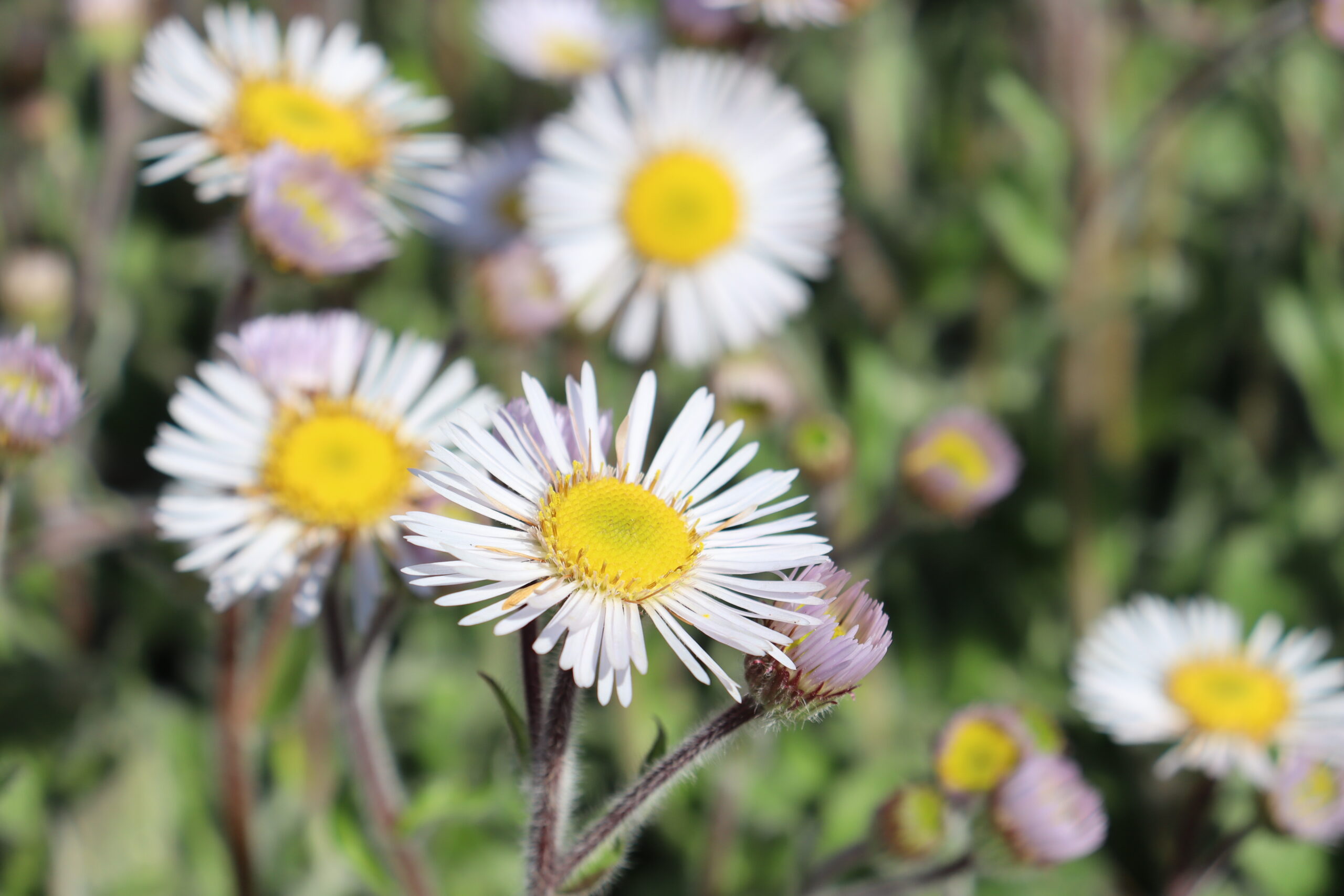The Georgia Pollinator Plants of the Year program hosted by the State Botanical Garden of Georgia at the University of Georgia identifies four species each year that make wonderful additions to any garden.
Started in 2020 by the State Botanical Garden and Extension at UGA and green industry partners, the program celebrates the benefits of pollinator plants and encourages home gardeners to add these plants into their own landscapes.
“I wouldn't hesitate to recommend this year's winners to anyone,” said Emily Laske, assistant conservation horticulturist at the State Botanical Garden. “Each of these species explodes into a show of blooms that delight people and pollinators alike.”
The four plants chosen for 2024 are:
Spring Bloomer: Robin’s Fleabane
Erigeron pulchellus ‘Lynnhaven Carpet’

About: Robin’s Fleabane is a perennial with 6- to 12-inch flowering stems that provide an evergreen, carpet-like ground cover. The textured foliage bursts into bloom in the spring with small white to light purple daisy-like flowers.
Conservation value: Supports many native pollinators, such as bees, butterflies and songbirds.
Summer Bloomer: Spotted Horsemint
Monarda punctata

About: Spotted Horsemint is a biennial, up to 3 feet tall, in the mint family that blooms into beautifully complex, yellow-spotted flowers with pink bracts during the summer months.
Conservation value: Supports many native pollinators, such as bees, butterflies, moths and hummingbirds.
Fall Bloomer: White Wood Aster
Eurybia divaricata

About: White Wood Aster is a perennial in the aster family that typically grows up to 3 feet tall. It has attractive heart-shaped leaves and showy white flowers in late summer through fall. The center of the flowers turns from yellow to red after being pollinated, providing more color and intrigue in the garden.
Conservation value: Supports many native pollinators, such as bees and butterflies.
Georgia Native: American Witchhazel
Hamamelis virginiana

About: American Witchhazel is a shrub or small tree that averages 15 feet tall but can get up to 35 feet. It explodes into a display of bright yellow, firework-like flowers in mid-fall to early winter.
Conservation value: Supports many native pollinators, such as moths, bees and small flies.
A committee selects the four plant species from a pool of nominations from gardeners, horticulturists, entomologists, ecologists and green industry professionals throughout Georgia. The committee announces the plants a year in advance, giving growers time to increase the supply of the plants for the public to acquire.
Ellen Honeycutt, board chair for the Georgia Native Plant Society, serves on the committee and says the program has several benefits for Georgia gardeners.
“It helps gardeners recognize that Georgians need to be growing pollinator plants across all three growing seasons, and it gives them specific recommendations to research for their area,” Honeycutt said.
The State Botanical Garden, a unit of UGA Public Service and Outreach, sells the pollinator plants of the year at its spring and fall plant sales and in the garden’s gift shop and works with growers and retailers in Georgia to produce and market the plants.
Click here for more information about the Georgia Pollinator Plants of the Year program and a directory of native plant nurseries.
Latest from Nursery Management
- GardenComm 2024 Annual Conference registration is open
- Landmark Plastic celebrates 40 years
- CropLife applauds introduction of Miscellaneous Tariff Bill
- Greenhouse 101 starts June 3
- Proven Winners introduces more than 100 new varieties for 2025
- CIOPORA appoints Micaela Filippo as vice secretary-general
- Rock Star Roses
- The container challenge





